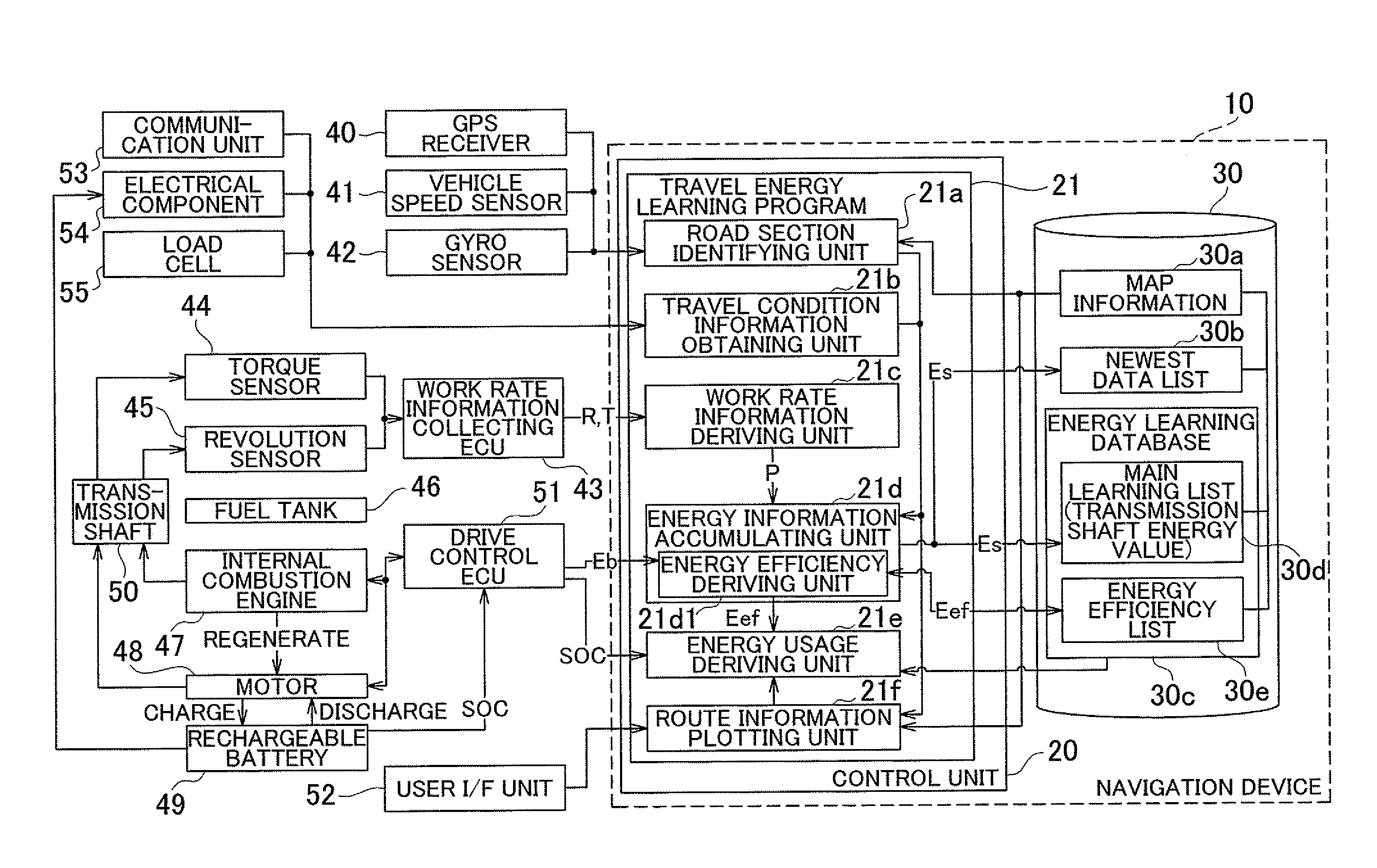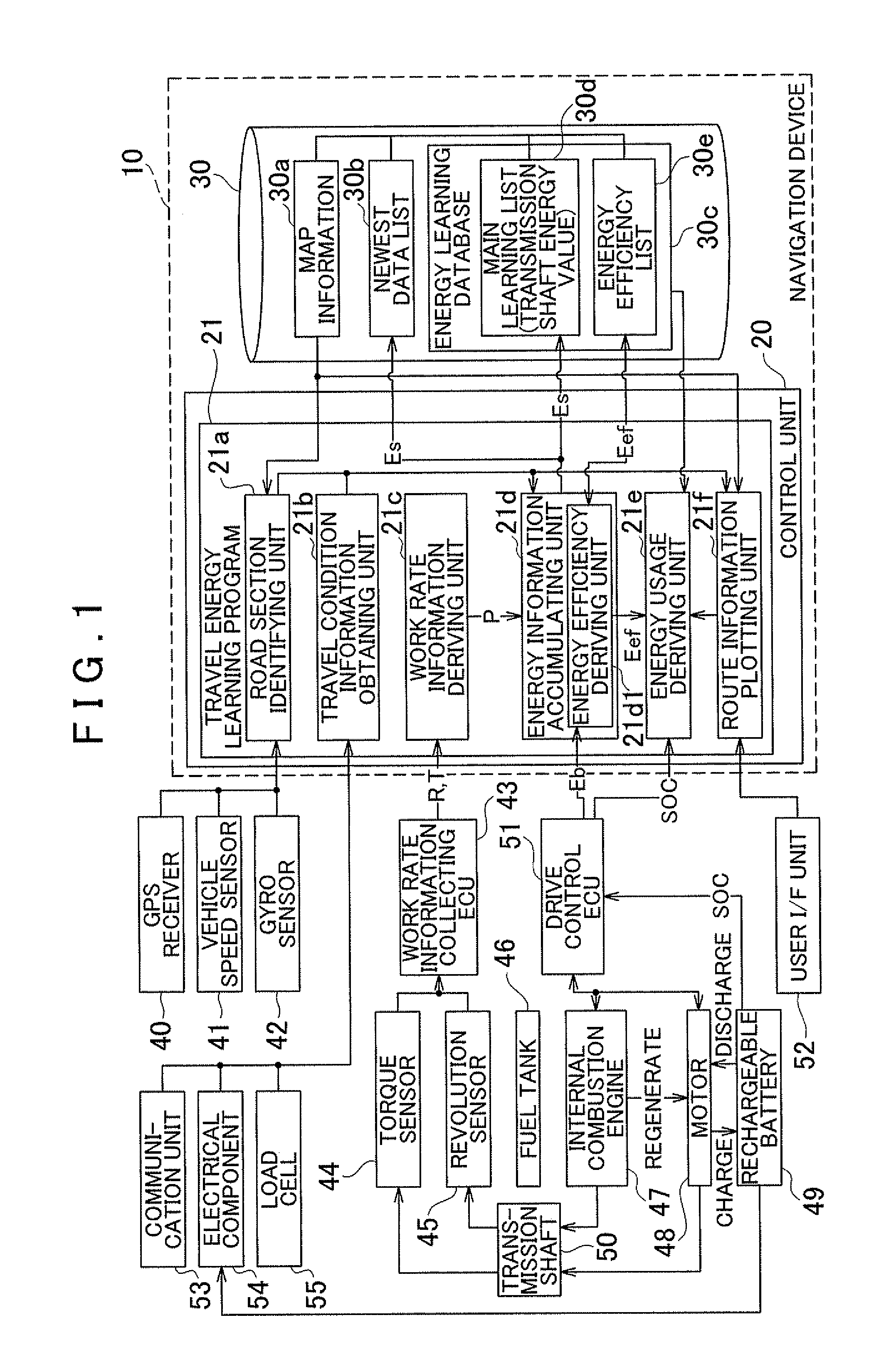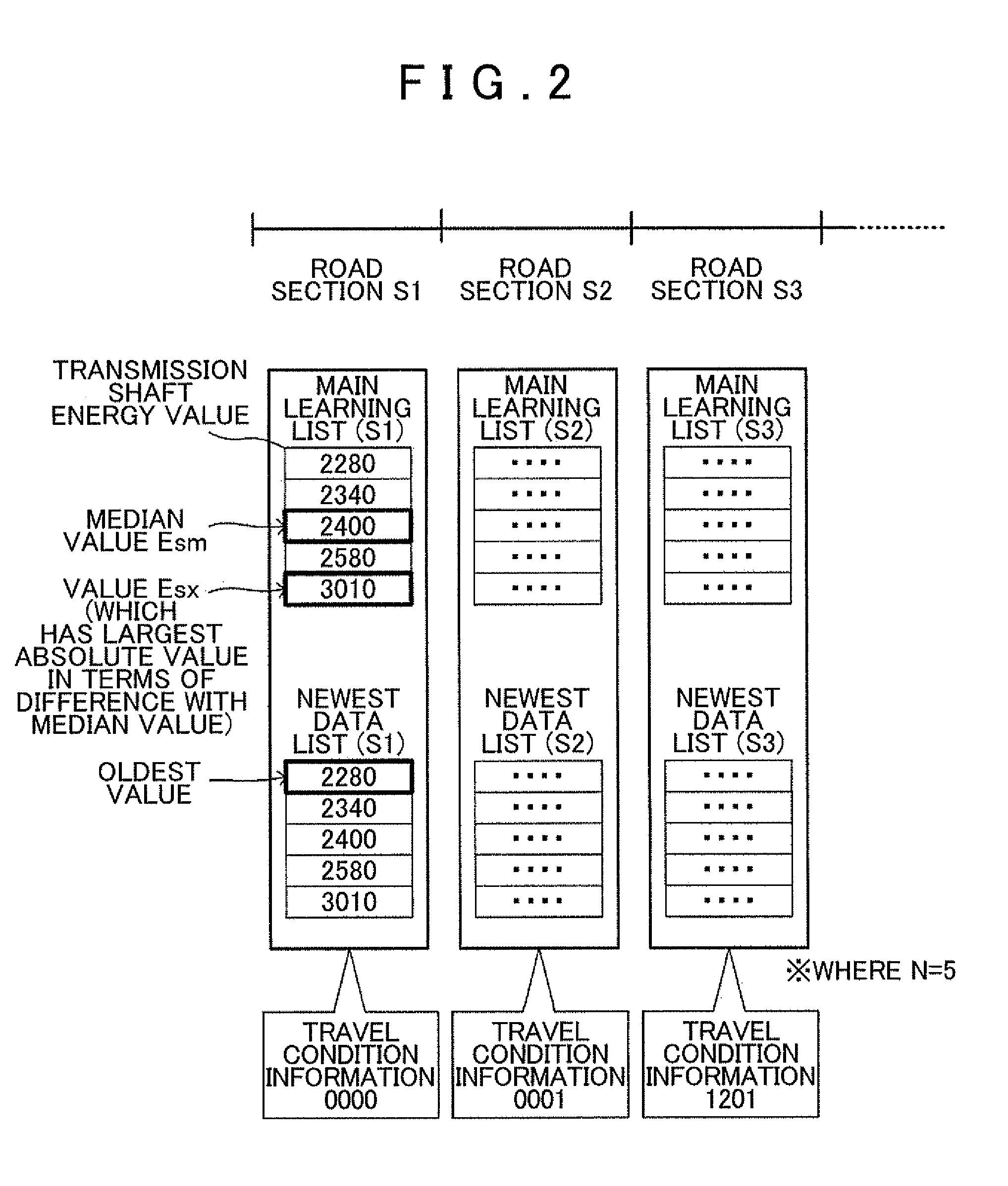Travel energy learning device, method, and program
a learning device and travel energy technology, applied in the direction of electric devices, process and machine control, navigation instruments, etc., can solve the problems of difficult to accurately derive complicated calculation, and difficulty in obtaining precise and accurate parameters used in calculation, so as to achieve accurate derivation of the energy required for traveling a road section
- Summary
- Abstract
- Description
- Claims
- Application Information
AI Technical Summary
Benefits of technology
Problems solved by technology
Method used
Image
Examples
Embodiment Construction
[0028]Hereinafter, an embodiment of the present invention will be described in the following order.
(1) Configuration of Travel Energy Learning Device
(2) Travel Energy Learning Processing
[0029](2-1) Energy Learning Processing
[0030](2-2) Energy Efficiency Deriving Processing
[0031](2-3) Learning Data Usage Processing
(3) Other Embodiments
(1) Configuration of Travel Energy Learning Device
[0032]FIG. 1 is a block diagram showing the configuration of a travel energy learning device installed in a vehicle. The travel energy learning device of the present embodiment is implemented by a navigation device 10. The navigation device 10 includes a control unit 20 that has a CPU, a RAM, a ROM, and the like, and a memory medium 30. The navigation device 10 executes programs accumulated in the memory medium 30 and the ROM using the control unit 20. In the present embodiment, a travel energy learning program 21 is one such program that may be executed by the control unit 20. To implement the learning ...
PUM
 Login to View More
Login to View More Abstract
Description
Claims
Application Information
 Login to View More
Login to View More - R&D
- Intellectual Property
- Life Sciences
- Materials
- Tech Scout
- Unparalleled Data Quality
- Higher Quality Content
- 60% Fewer Hallucinations
Browse by: Latest US Patents, China's latest patents, Technical Efficacy Thesaurus, Application Domain, Technology Topic, Popular Technical Reports.
© 2025 PatSnap. All rights reserved.Legal|Privacy policy|Modern Slavery Act Transparency Statement|Sitemap|About US| Contact US: help@patsnap.com



